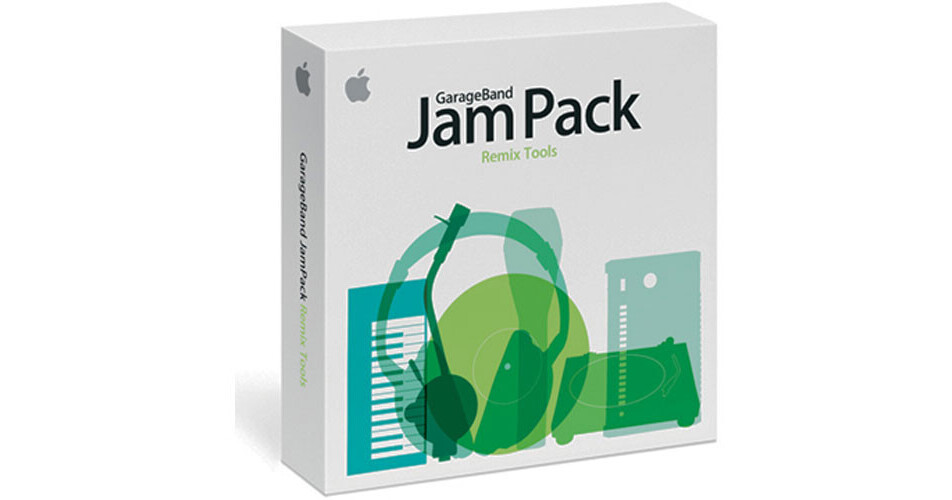Question: Q: GarageBand and Jam Packs Hi So thanks to some helpful advice here that I read, I bought Main Stage 3 yesterday to get the extra loops and bits I could use in GarageBand. GarageBand Jam Pack: Voices There was also another GarageBand Jam Pack, initially known just as GarageBand Jam Pack, later GarageBand Jam Pack 1, which Apple discontinued in January 2006. Beginning with the release of the Remix Tools and Rhythm Section Jam Packs, each Jam Pack has been designated with a number. With the newest member of the Jam Pack family you can conduct your own orchestra with new sounds for GarageBand, Logic, and Soundtrack. Create lush symphonic music with this collection of software instruments and loops, including strings, brass, woodwinds, percussion, piano, and more. From classical compositions to Hollywood-style scores to.
Reader Zach Paull is a GarageBand enthusiast who’s less than enthusiastic about the amount of hard drive space consumed by GarageBand’s loops. He writes:
I am a huge fan of GarageBand. I have been using it for a few years now, and have only one major gripe. I have purchased and installed four jam packs. This has taken up a large chunk of my hard drive space—nearly 17 gigs. I work on an iBook G4 which at its best has only 25 gigs of available space. I think with all the space that these packs take up, it is slowing my computer down when I run GarageBand on it. I know that with my iTunes Library, I can move it to an external hard drive, and that has been a big help. Is there any way that this can be done with these jam packs?
There is. By default, Apple’s loops are stored in two locations—/Library/Audio/Apple Loops and /Library/Application Support/GarageBand/Apple Loops. Dig down into these folders until you locate the folders that hold specific jam packs—Jam Pack 2 – Remix Tools and Jam Pack 4 – Symphony Orchestra, for example. Drag these jam pack folders to your external drive. Once copied, drag the original folders to the Desktop.
GarageBand will give no indication that it can’t find its loops until you try to use one of them. Then it will throw up a dialog box indicating it hasn’t a clue where they are and asks if you’d like to re-index your loops. Click Cancel.
Now locate the jam pack folders that you copied to your external drive and drag them into GarageBand’s loop browser. GarageBand will acknowledge that you’re attempting to add loops to the browser and ask if you’d like to keep the loops in their current location or copy them to the Loops folder. The correct answer is Current Location. Test your configuration by selecting one of the jam packs from the browser loops pop-up menu (the one that normally reads My Loops), choosing a sound, and previewing it. If GarageBand won’t play it and instead throws up that re-indexing dialog box, let GarageBand re-index the loops this time.
Garageband Jam Packs Free

Once you’re sure everything is working as it should, you can toss out the original loop folders that you moved to the Desktop.
Learn more about the GarageBand Jam Pack: Symphony Orchestra
Garageband Jam Packs
| Brand | APPLE |
|---|---|
| Model | MA319Z/A |
Garageband Jam Packs Free Download
| Feature | With the newest member of the Jam Pack family you can conduct your own orchestra with new sounds for GarageBand, Logic, and Soundtrack. Create lush symphonic music with this collection of software instruments and loops, including strings, brass, woodwinds, percussion, piano, and more. From classical compositions to Hollywood-style scores to rock and hip-hop textures, with Jam Pack: Symphony Orchestra, you are the conductor. |
|---|
| Name | GarageBand Jam Pack: Symphony Orchestra |
|---|---|
| Version | Standard |
| Operating Systems Supported | Mac OS X version 10.2.6 (Jaguar) or later |
| System Requirements | Requires GarageBand (installed with iLife '04 or '05), Logic Express 7, or Logic Pro 7. Soundtrack supports Loops only in Jam Packs. Macintosh computer with G3 600Mhz processor or higher to use Apple Loops (G4 or G5 required for software instruments) 256 MB of physical RAM A DVD optical drive (such as a Combo drive or SuperDrive) 6 Gigabytes (GB) of free hard disk space |
| Packaging | Retail |
| Date First Available | May 15, 2006 |
|---|